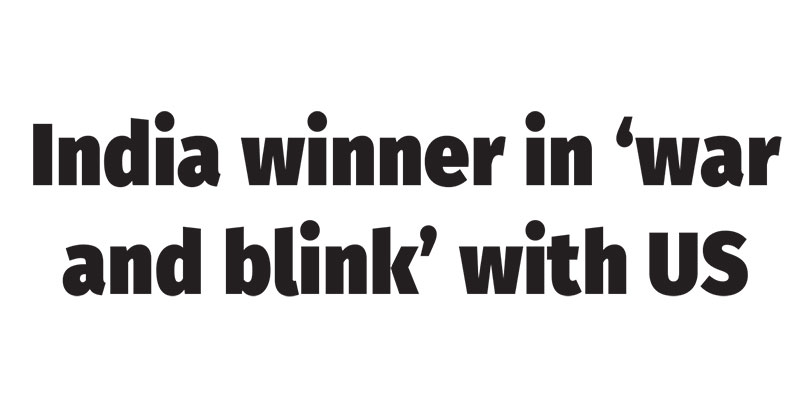Blitz Bureau
NEW DELHI: The intensifying trade dispute between Washington and New Delhi, marked by steep tariffs, sharp rhetoric, and high-stakes diplomacy, has unexpectedly elevated India’s standing on the world stage. What began as punitive economic pressure has turned into a platform for India’s assertion of strategic autonomy and diplomatic confidence.
At the center of this transformation stands Prime Minister Narendra Modi, whose foreign policy choices have enabled India to emerge not as a victim of the so-called global trade war, but as one of its quiet victors.
President Donald Trump’s recent moves — slapping tariffs of up to 50 per cent on Indian goods, urging Europe to follow suit, and lambasting India on social media — were designed to squeeze New Delhi into conformity over its energy trade with Russia.
Yet, within days, the same American President was speaking of India as a valued partner, expressing hope for renewed negotiations, and praising Modi personally as a “great Prime Minister and friend.”
Modi’s own response — appreciative yet firm — was telling. What makes this episode significant is not only the clash of tariffs but also the broader context. India has made it clear that it will not abandon discounted Russian crude as long as it remains economically viable.
At the same time, Modi has cautiously re-engaged with Beijing, opening dialogue channels with President Xi Jinping after years of icy relations. This twin posture — resisting US coercion while balancing ties with Moscow and Beijing — underscores the logic of India’s foreign policy: multiple partnerships, no singular dependency.
Adding a further twist is the role of the American judiciary. US courts have ruled that Trump’s broad tariff powers under the International Emergency Economic Powers Act were unlawful, and the Supreme Court will now deliver a final verdict in November.
This legal scrutiny has weakened the credibility of Trump’s tariff campaign and, by extension, bolstered India’s case. New Delhi can now negotiate not as a pressured partner but as a confident actor, pointing out that even within America, the legitimacy of such economic weapons is under question.
India’s ability to withstand tariff pressures sets an example for other nations, especially in the Global South, that face similar coercive tactics. New Delhi has reinforced the idea that multipolarity in trade relations is not only possible but also desirable. For global trade dynamics, this signals a shift: No single power, even the United States, can dictate terms unilaterally.
India’s “victory” in this trade confrontation is therefore more than symbolic. It alters the global calculus by showing that sovereign decision-making, when pursued with consistency and balance, can withstand external shocks. Modi’s foreign policy, often described as pragmatic nationalism, has in this instance delivered both moral credibility and diplomatic leverage.
As the world awaits the Supreme Court ruling in Washington and the next chapter in trade talks, one lesson is clear. India’s resilience has turned coercion into prestige, tariffs into opportunity, and pressure into proof of strength.



